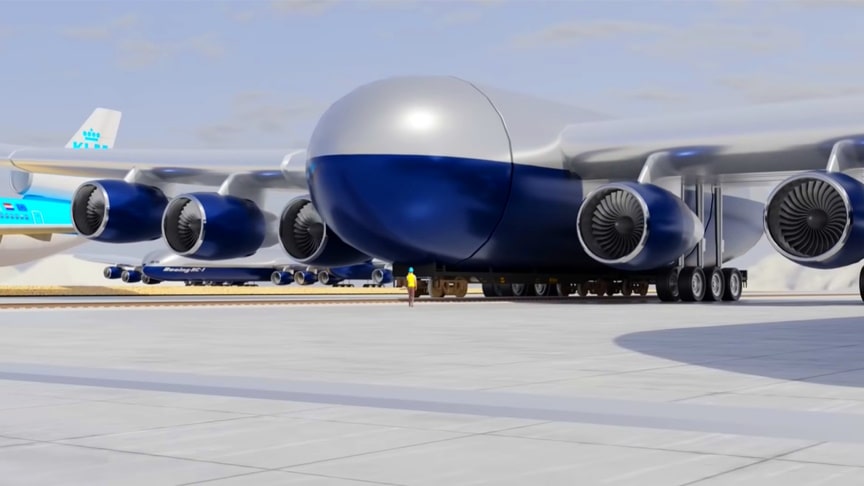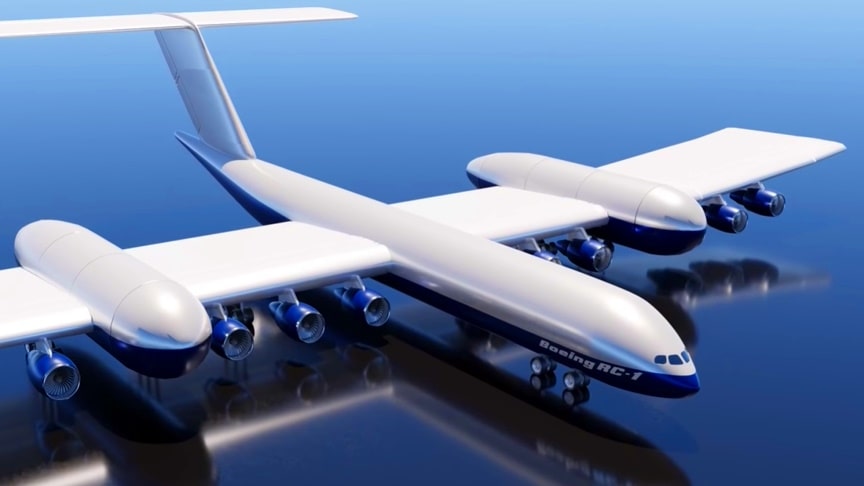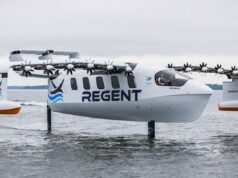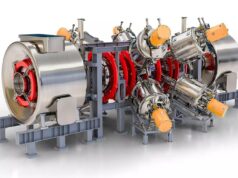The Boeing RC-1, short for “Resource Carrier 1”, was a design for an enormous cargo aircraft intended to haul oil and minerals out of the northern reaches of Alaska and Canada where ice-free ports were not available. It was optimized for short-haul missions only, carrying cargo to locations for loading onto ships, trains or pipelines.
source/image: Found And Explained
The basic design had a rectangular wing spanning almost 500 feet (150 m), was powered by 12 Pratt & Whitney JT9D engines, and had 56 wheels in the main landing gear. A total of 2,300,000 pounds (1,000,000 kg) of cargo was carried in two under-wing pods and fuselage.To begin, they started with the Boeing 747. Turning one into a oil transport wouldn’t be hard, and inital designs showed that it could do it.
source/image: Found And Explained
The plane would turn its wing fuel tanks into oil tanks, as it didn’t need the fuel for the short-range. Boeing presented this 747 idea but as the plane made a profit of one dollar per barrel, the companies were not interested. To spread the heavy load out on the wings, the plane would need eight sets of landing gears. However, this had a problem for when the plane would turn on the ground, limiting a swept wing. This means that the plane would use a straight wing.
Advertisement
This means a slower speed of Mach 0.7. But this was a fair compromise, as the flights would be short and the engineers could focus on a low-speed high-lift wing design. This would mean that the plane would have a short-range, fully loaded of 1,000 miles, 1,610 km respectively. The plane would weigh around 447,000 kg, or double the weight of an An-225.The Canadian plains project also had one more request – that the aircraft use a gas fuel as opposed to jet fuel. It would have a huge fuselage with nothing in it, the heavy cargo was in the pods.
These fuel tanks would carry as natural gas, which could also now be transported in the same tanks. The team believed that a fleet of 50 aircraft would be required for the project, with 15 of the aircraft being used as spares to ensure 24-hour service. At then $72 million, $439 million today, a pop, this was not a cheap operation. Then in 1973, the oil crisis struck. The Boeing resource carrier was no longer profitable, and all design plans for it were totally abandoned – bringing the end to the insane journey of what could have been the world’s biggest cargo aircraft./Found And Explained












